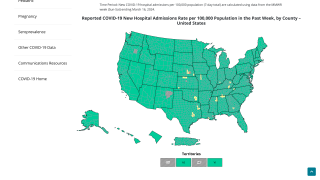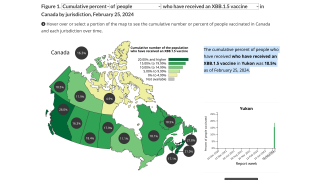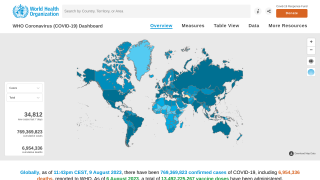Influenza A Could Suppress SARS-CoV-2 Replication

According to research published this week in the Journal of Virology, coinfection of SARS-CoV-2 and influenza A viruses changes neither the trajectory nor the severity of influenza A infections, regardless of timing.
But should a person contract the influenza A virus first, the response to that infection can significantly suppress the SARS-CoV-2 impact.
“The (hamster) research is important because the human population now has two circulating respiratory RNA viruses with high pandemic potential: SARS-CoV-2 and influenza A,” the investigators wrote on July 12, 2022.
“As both viruses infect the airways and can result in significant morbidity and mortality, it is imperative that we also understand the consequences of coinfection.”
These viruses infect the same cells within the airway.
Notably, the investigators found that the influenza A virus interferes with SARS-CoV-2 replication in the lung and can continue to do so even more than one week after clearance of influenza A virus (IAV), according to the research.
“These data suggest the presence of factors intrinsic to or induced by [IAV] that may restrict the growth of SARS-CoV-2, but it remains unclear whether this effect plays a role on disease severity,” the researchers wrote.
The investigators performed the experiments in cultured cells, as well as in a golden hamster animal model. “… animals were administered the two viruses simultaneously, and examined at days 1,3, 5, 7 and 14 post-infection,” wrote corresponding author Benjamin R. tenOever, Ph.D., professor of microbiology, New York University, Langone Health, New York, N.Y., in a press release.
The researchers also conducted experiments in which they first challenged the animals with either virus, followed three days later by the other virus, monitoring [them] on days 1, 3, and 5 post-second challenge.
“This study could be used as an example of how an immune response to something unrelated can provide protection against SARS-CoV-2,” said tenOever.
The team demonstrated that coinfection does not result in a worse outcome of disease in an animal model.
They showed that IAV interferes with SARS-CoV-2 both in vitro and in vivo through a mechanism involving both an IFN-I-dependent and an IFN-I-independent mechanism. In contrast, SARS-CoV-2 infection appears to interfere only with subsequent IAV spread in IFN-competent cells, suggesting SARS-CoV-2 may have a more difficult time controlling the host response than IAV.
“These results suggest that coinfection with SARS-CoV-2 and influenza A virus does not represent a looming threat for humanity,” added tenOever.
On April 18, 2022, the WHO issued a statement: With the increasing detections of influenza during the COVID-19 pandemic, countries are recommended to prepare for co-circulation of influenza and SARS-CoV-2 viruses.
The WHO encourages the administration of both vaccines during the same provider visit.
The Zegar Family Foundation supported this research. No industry conflicts were disclosed. The American Society for Microbiology is the largest single life science society, composed of more than 30,000 scientists and health professionals.
Additional influenza vaccine news for the 2022- 2023 flu season is posted at PrecisionVaccinations.com/Flu.
PrecisionVaccinations publishes fact-checked, research-based vaccine news curated for mobile readership.
Our Trust Standards: Medical Advisory Committee
























